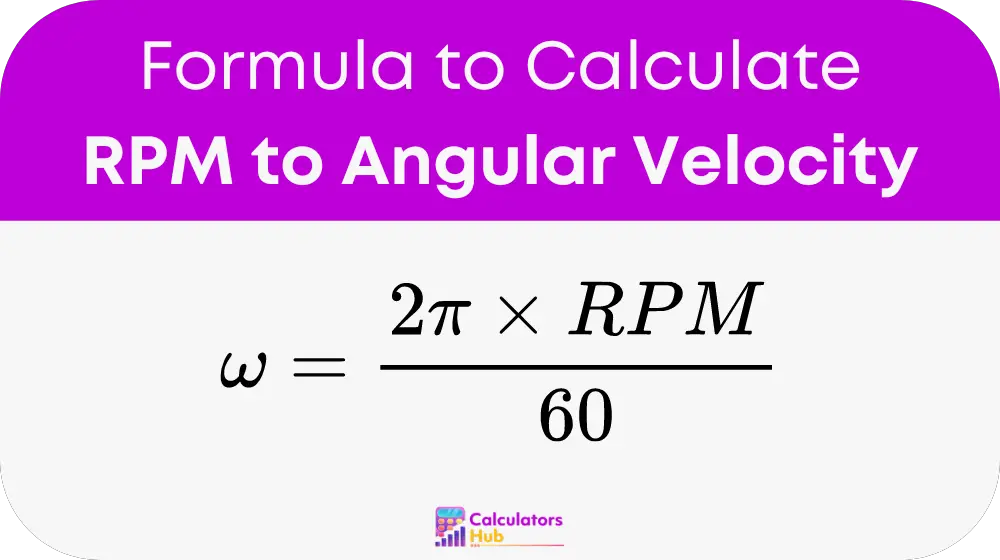The RPM to Angular Velocity Calculator is an invaluable tool that converts the speed of an object from revolutions per minute—a common unit in machinery—to angular velocity in radians per second, a standard unit in physics. This conversion is essential in fields such as automotive engineering, mechanical design, and robotics where precise rotational speeds are crucial.
Formula of RPM to Angular Velocity Calculator
To convert RPM to angular velocity, use the following straightforward formula:

Where:
- ω is the angular velocity in radians per second (rad/s)
- RPM is the revolutions per minute
Understanding this formula is essential for anyone working with rotational movements in a technical setting.
Practical Table of Conversions
Below is a practical table that converts commonly encountered RPM values into angular velocities, providing a quick reference without the need for manual calculations:
| RPM (Revolutions per Minute) | Angular Velocity (rad/s) |
|---|---|
| 60 | 6.28 |
| 120 | 12.56 |
| 180 | 18.84 |
| 240 | 25.12 |
| 300 | 31.40 |
This table helps save time and increases accuracy in calculations.
Example of RPM to Angular Velocity Calculator
Let’s go through a practical example to see the calculator in action: Suppose an engine runs at 1500 RPM. Using the formula provided:
ω = (2π×1500) / 60=157rad/s
This example illustrates how quickly you can convert RPM to angular velocity using the calculator.
Most Common FAQs
RPM stands for Revolutions Per Minute, indicating how many full rotations a point on a rotating object makes around its axis in one minute.
Angular velocity measures how quickly an object rotates or revolves, which is crucial for designing and controlling mechanical systems to ensure they operate safely and effectively.
Yes, this calculator is versatile and can be used across different machinery and engine types, as long as the input is in RPM.